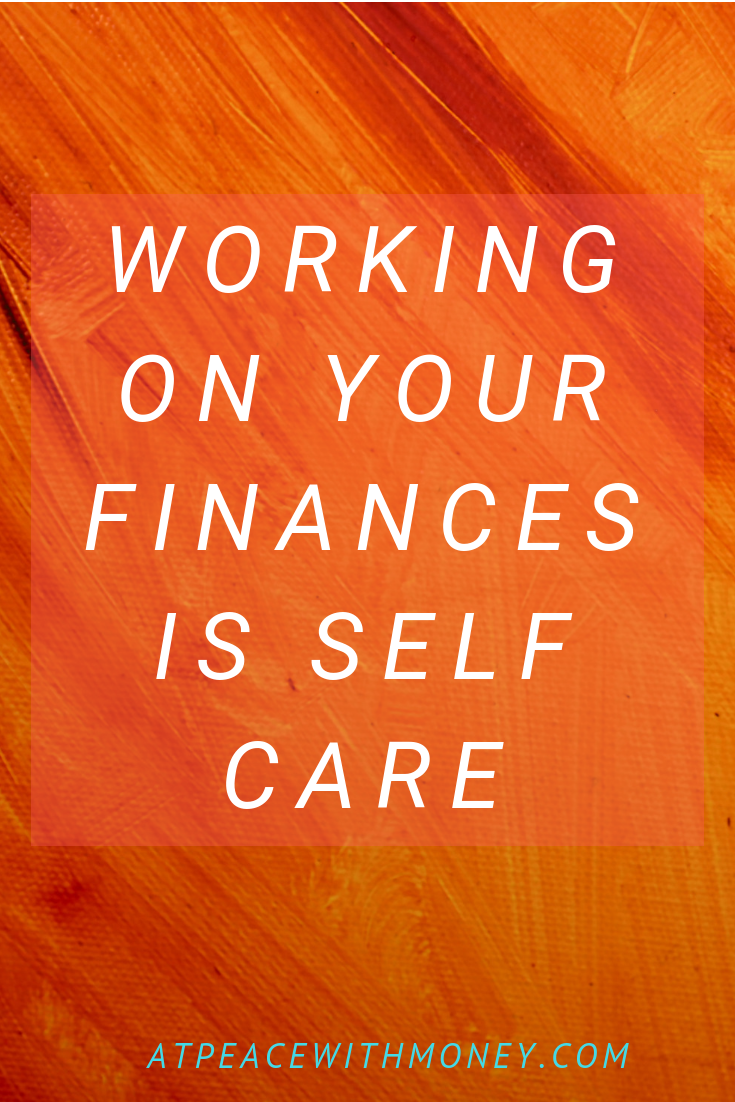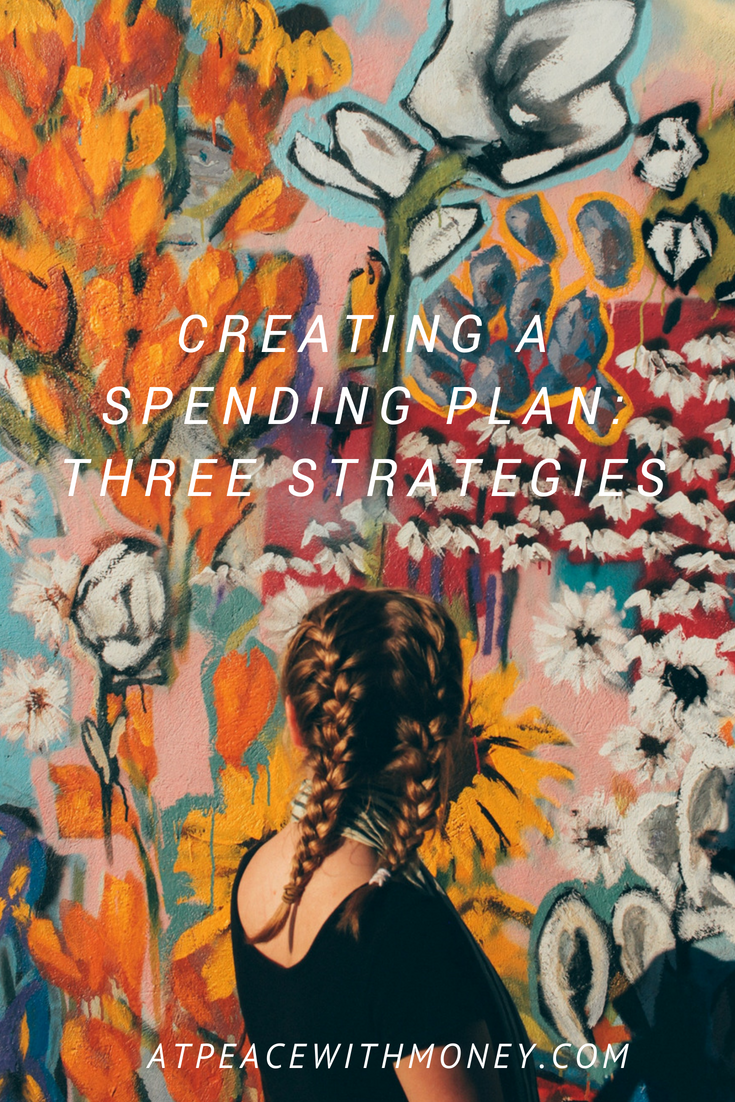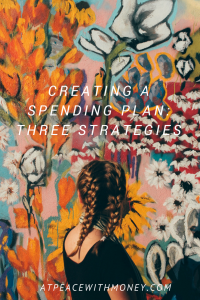How to Create a Spending and Income Plan, Part One

Planning ahead with your money is absolutely essential to leading a successful and stress-free life. Creating a spending and income plan for the month ahead can help you achieve your vision of financial freedom. Today, let’s get into the nitty gritty details of how to create a plan that will move you towards your financial goals.
The ideas I’m going to share here are not new ones, but they are time-tested and solid. Many of my clients have worked with these processes, and I also take inspiration from my mentor Karen McCall, founder of MoneyGrit.(R). This article is part one of two, and these are the first two steps in the 5-step process. Let’s jump right in:
Clarifying Your Spending
There are a couple ways to do this. I often recommend that my clients sit down with the past three months of their bank and/or credit card statements. (For most of us, these should be available online). Then, I ask them to go through line by line to see where money is really going.
Karen McCall is a proponent of having people closely track their finances. She reports that the act of tracking every dollar is enough to bring a new level of mindfulness and intentionality into our spending. In her book Financial Recovery, she writes:
“While people are hesitant to track because of what they fear they’ll have to give up, it is far more often the case that they get more of what they need and want by eliminating unconscious spending.”
Tracking can be a longer process than simply reviewing your financial records retrospectively, but both bring great insight into where your money is going. Try both and see which works best for you!
Clarify Your Income
Often when I say this, people immediately think specifically about the money they earn from their job. While this is definitely in the category of “income”, it’s likely not the only thing. Total up all your estimated income from various sources, like selling used items or rental property income. If you need to, you can go back and review all your income information that your bank statements provided you and use that to make an educated guess.
If you are self-employed or in another situation where your income varies month-to-month, it’s still very important to complete this step. Make a conservative estimate of your income to avoid coming up short, or go through the process of setting up a money system and a solopreneur paycheck for yourself! See my article “How to Create Your Own Paycheck Using a Money System.”
Stay tuned for Part II – and make sure you take breaks and pace yourself through this process.
If you liked this article, you’ll probably love my e-Book, 9 Secrets to Financial Self Care. Get your free copy here!













 afternoon off, a fun or inspiring event, or whatever you’d like to do to celebrate your achievements so far! Being a self-starting solopreneur is hard work. If you’ve done the work, you deserve to cheer yourself on once in a while.
afternoon off, a fun or inspiring event, or whatever you’d like to do to celebrate your achievements so far! Being a self-starting solopreneur is hard work. If you’ve done the work, you deserve to cheer yourself on once in a while.


 When you’re making your plan, be sure to adapt your goals to what’s worked so far this year. If you really love a certain routine or feel fired up to keep working toward a certain goal, go for it. If you’ve stalled on a project because you need to do more research, carve out some time to go back to the drawing board. When charting your course, keep your own needs and preferences in mind.
When you’re making your plan, be sure to adapt your goals to what’s worked so far this year. If you really love a certain routine or feel fired up to keep working toward a certain goal, go for it. If you’ve stalled on a project because you need to do more research, carve out some time to go back to the drawing board. When charting your course, keep your own needs and preferences in mind.


 As we go into 2019, I’m focusing on this idea of financial organization as self-care. To kick the new year off, I’m releasing a series detailing my top three money moves for financial success this year. These insights are geared towards solopreneurs and intended to help you get on top of your business finances. [Edit: you can
As we go into 2019, I’m focusing on this idea of financial organization as self-care. To kick the new year off, I’m releasing a series detailing my top three money moves for financial success this year. These insights are geared towards solopreneurs and intended to help you get on top of your business finances. [Edit: you can 


 Often, I think we look at business as being a rather sterile aspect of our culture and lives – it’s just the way we make money. In fact,
Often, I think we look at business as being a rather sterile aspect of our culture and lives – it’s just the way we make money. In fact, 


 I’ve also been trying to practice a technique for grounding my memories. The way this works is, when having a good experience, you try to capture the memory by taking in all the sensory details. Notice how your surroundings smell, feel, sound, and taste. Paying attention to these details has helped me appreciate them more. I learned this technique from
I’ve also been trying to practice a technique for grounding my memories. The way this works is, when having a good experience, you try to capture the memory by taking in all the sensory details. Notice how your surroundings smell, feel, sound, and taste. Paying attention to these details has helped me appreciate them more. I learned this technique from 

 Your money “why” is like your business’s compass, because it’s hard to get where you’re going if you don’t know exactly where you’re going or why you’re going there! Everyone talks about finding your “why” – your motivation or purpose – in business. Doing so is absolutely important, but today I want to talk about your money “why” because I think that is equally important to the direction of your business. Knowing exactly what your goals are for the money your business generates will guide you in your financial decision making process and ultimately to the realization of said goals.
Your money “why” is like your business’s compass, because it’s hard to get where you’re going if you don’t know exactly where you’re going or why you’re going there! Everyone talks about finding your “why” – your motivation or purpose – in business. Doing so is absolutely important, but today I want to talk about your money “why” because I think that is equally important to the direction of your business. Knowing exactly what your goals are for the money your business generates will guide you in your financial decision making process and ultimately to the realization of said goals. 



